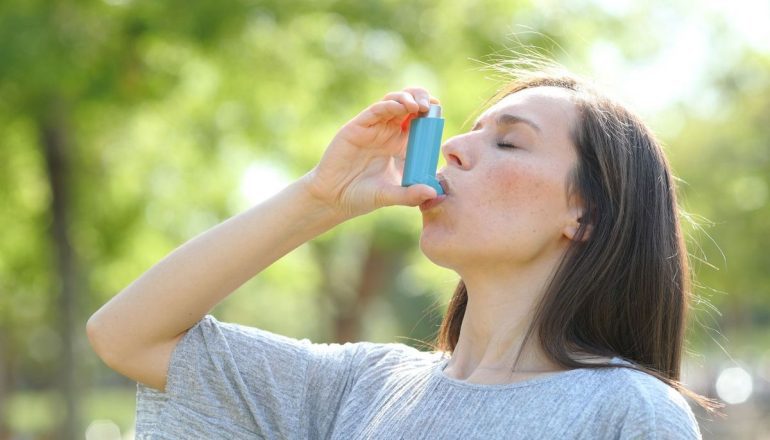People suffering from asthma are usually prescribed two types of inhalers:
- Spray containing corticosteroids: This acts as a long-term medication and must be used regularly to relieve the inflammation and thus the cause of the symptoms. This reduces asthma attacks. In this case, cortisone acts only locally, that is, in the airways. Therefore side effects affecting the whole body are not expected from an asthma spray.
- Saba Spray: Contains an active ingredient that expands the bronchi. It is an emergency medicine and is used only in an emergency to quickly relieve acute symptoms. The effect usually only lasts for a few hours.
Good asthma treatment is characterized by the fact that SABA sprays are used as rarely as possible.
However, an analysis of prescription data in the UK found that 26 per cent of asthma patients primarily used Saba inhalers and were prescribed them at least six times a year. The number of prescriptions varied significantly between primary care practices: in some, more were prescribed to 6 percent of asthma patients, in others it was up to 60 percent.
However, the use of SABA sprays instead of corticosteroid sprays has been associated with poor asthma control and severe asthma attacks and hospitalization. An older 2014 study also showed that overuse of SABA sprays killed more people with asthma.
Dr. Anna de Simoni of Queen Mary University London said: “There is significant room for improvement – we have calculated that hospitalizations related to asthma in this group resulted in a reduction in patients using more than 12 SABA inhalers per year. Could be 70 percent less.”
Source: DOI 10.3399/bjgp.2021.0725

Web guru. Amateur thinker. Unapologetic problem solver. Zombie expert. Hipster-friendly travel geek. Social mediaholic.





